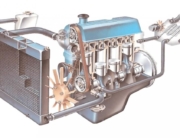I first coordinated close misses and you will thin wins with regards to numerous observable properties (see Steps point for additional breakdown regarding CEM), and find that after matching, close misses still outperformed thin wins in terms of both strike papers (16
The performance advantage of the near misses is particularly surprising given that the narrow wins, by construction, had an initial NIH funding advantage immediately after treatment. Given that funding from the NIH can be an important means to augmenting scientific production 35,38,39,52,56,57,58 , we investigate funding dynamics for the near-miss and narrow-win groups over the following ten-year period. We find that the near-miss group naturally received significantly less NIH funding in the first five years following treatment, averaging $0.29 million less per person (Fig. 2d, t-test p-value 0.1, Cohen’s d = 0.02). Although the NIH is the world’s largest funder for biomedical research, near misses might have obtained more funding elsewhere (see ‘Additional funding by near misses’ in Supplementary Note 3 for details). To test this hypothesis, we further collected individual grant histories for PIs in our sample from the Dimensions data, allowing us to calculate the total funding support from agencies worldwide beyond NIH. We first measured the total funding support from the U.S. National Science Foundation (NSF) received by individuals with the same name in the same period, finding narrow wins obtained significantly more NSF funding within 5 years after treatment. https://datingranking.net/nl/firstmet-overzicht/ We further calculated the total funding support from agencies other than the NIH or NSF, finding that near misses did not acquire more funding than narrow wins. We also manually checked acknowledgment statements within a fraction of papers published by the two groups, finding again the same conclusion.
The fresh new RD method allows us to eliminate unobserved influences toward investment benefit or any if you don’t unobserved individual qualities that differ smoothly that have the latest rating 63,64 , allowing me to subsequent present an excellent causal results of early-career near-miss and future field perception
Together, this type of performance reveal that during the period of ten years, close misses had fewer 1st gives from the NIH and you may NSF. Yet , they ultimately penned as numerous documents and you can, most surprisingly, introduced works you to garnered drastically large impacts than simply the slim-earn equivalents.
Is the uncovered difference in outcomes causally attributable to the early-career setback? Or, could it be explained by other alternative forces? Indeed, there might still exist observable or otherwise unobserved factors that affect funding success near the threshold (e.g., individual characteristics 60 , fields of study, personality traits, etc.), which might also drive future career outcomes. To rule out alternative explanations, we leverage two additional inference techniques, Coarsened Exact Matching (CEM) 61,62 and fuzzy Regression Discontinuity (RD) 63,64 . 4% for near misses, 14.0% for narrow wins, ? 2 -test p-value < 0.001, odds ratio = 1.20) and average citations per paper (30.8 for near misses and 27.7 for narrow wins, t-test p-value < 0.001, Cohen's d = 0.05, see ‘Matching strategy and additional results in the RD regression' in Supplementary Note 3 for details). While matching can only eliminate potential observable features, we further mitigate the effect of other observable and unobservable influences using the RD analysis. Specifically, we use an indicator for the score being above or below the funding threshold as an instrumental variable (IV), rather than the actual funding outcome itself, to predict future career outcomes (see Methods section). By accounting for any potential confounding factors, our RD estimates indicate that one early-career near miss increases the probability of publishing a hit paper in the next 10 years by 6.1% (p-value = 0.041), and the average citations per paper by 34% (9.67 citations in 5 years, p-value = 0.046) (see Methods section). The RD analyses help establish the causal interpretation of our results, and the agreement in results across all the methods further demonstrates the robustness of our findings.






